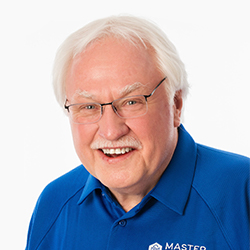Get unique, complex parts easily. No matter your requirements, Chaoyi Spring creates hard-to-produce coil springs and wire forms.
Let us help you create the custom wire form you need, from S-hooks and J-hooks to utility hooks and more.
We work closely with customers across a wide range of industries, helping them design and manufacture made-to-order parts.
Why choose Chaoyi Spring? We prioritize customer-focused collaboration, modern equipment and the latest technology to make your parts per print.
Find the information and guidance you need, from measuring a spring to learning about materials, placing an order and much more.
In the world of mechanical engineering, springs are ubiquitous components that play a crucial role in various applications. From the simple act of closing a door to the complex mechanisms


In the world of mechanical engineering, springs are ubiquitous components that play a crucial role in various applications. From the simple act of closing a door to the complex mechanisms of a car suspension, springs provide essential functions. Two common types of springs are torsion springs and extension springs, each possessing distinct characteristics and suited for specific applications. Understanding the differences between these springs is critical for engineers and designers to choose the optimal solution for their projects.

Torsion springs, as the name suggests, are designed to store and release energy through twisting or rotational motion. They are typically made of coiled wire that, when subjected to a torque, rotates around its axis. The amount of rotation is directly proportional to the applied torque, and this relationship is defined by the spring's rate, which indicates the force required to rotate the spring through a specific angle. Torsion springs are commonly used in applications where rotational force is needed, such as door hinges, garage door openers, and spring-loaded mechanisms.
Extension springs, on the other hand, are designed to store and release energy by stretching or extending. They are typically made of coiled wire that, when subjected to a tensile force, elongates along its axis. The amount of elongation is directly proportional to the applied force, and this relationship is defined by the spring's rate, which indicates the force required to extend the spring by a specific length. Extension springs are commonly used in applications where linear force is needed, such as tensioning cables, holding objects in place, and providing a return force in retractable mechanisms.
The fundamental difference between torsion and extension springs lies in their primary function: torsion springs rotate, while extension springs elongate. This difference leads to several key distinctions:
Choosing the right type of spring for your application depends on the specific requirements of your design. Consider the following factors:
Although torsion and extension springs have distinct functions, they share some common characteristics:
Here are some examples of how torsion and extension springs are used in real-world applications:
Torsion and extension springs are essential components in a wide range of mechanical applications. Understanding their differences, including their primary functions, load applications, and typical applications, is vital for engineers and designers to select the right spring for their specific needs. By carefully considering the factors discussed above, you can ensure that your chosen spring will meet the performance and reliability requirements of your design.
In the fascinating world of mechanical engineering, springs are unsung heroes, quietly working behind the scenes to power countless devices. Torsion springs and extension springs, with their distinct characteristics and diverse applications, offer a testament to the ingenuity and versatility of these simple yet essential components. From the mundane to the extraordinary, springs continue to play an indispensable role, making the world a more dynamic and efficient place.
Browse some of the custom wire forms and springs that we manufacture. Don’t see what you need? We specialize in made-to-order products that meet your application requirements.
Visit Our GalleryNeed a custom wire form or coil spring? We make it work. Fill out the contact form and a representative will respond within 1 business day. If you have a PDF or CAD file, you can submit to request a quote.